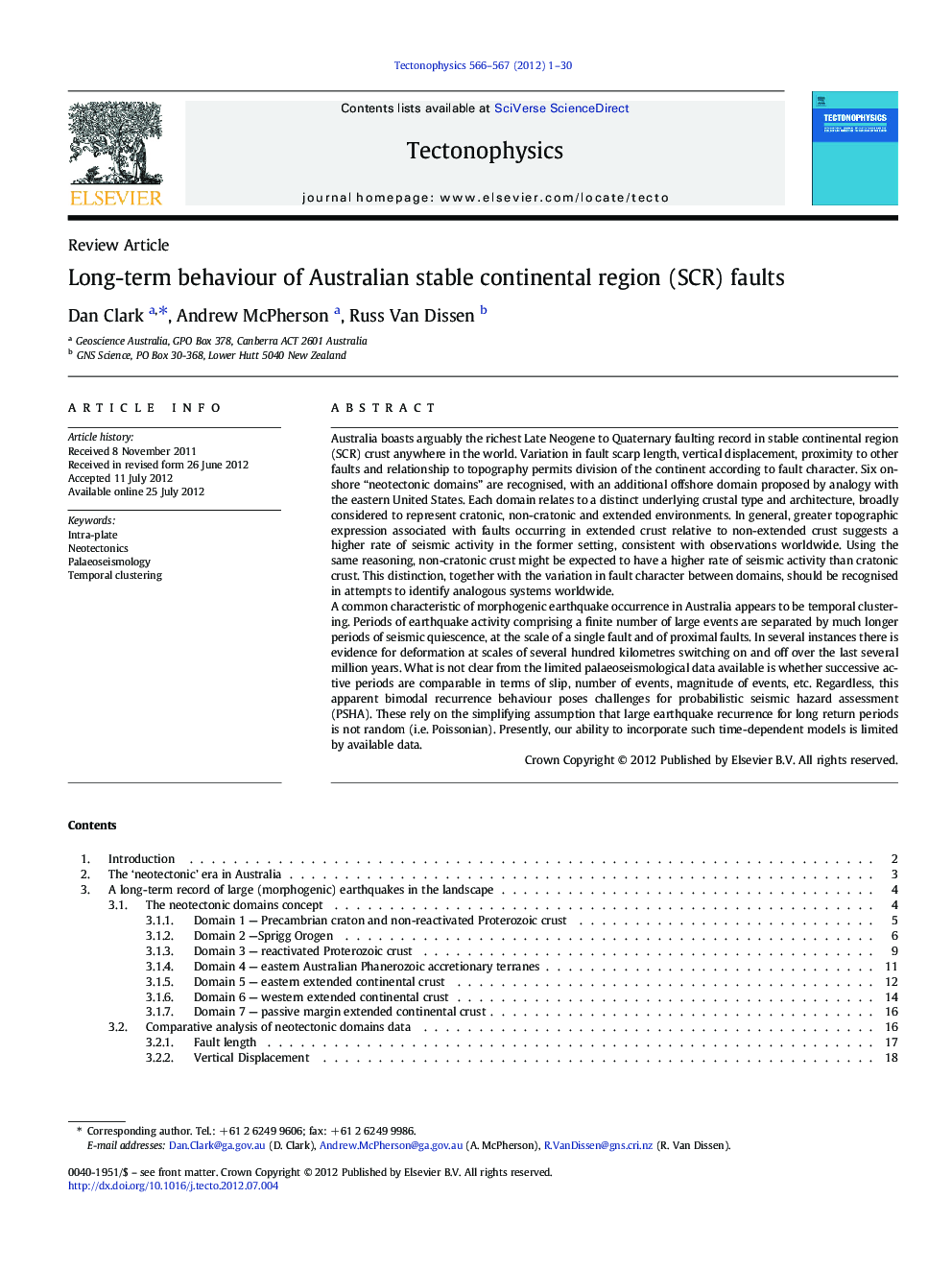| کد مقاله | کد نشریه | سال انتشار | مقاله انگلیسی | نسخه تمام متن |
|---|---|---|---|---|
| 4692749 | 1636813 | 2012 | 30 صفحه PDF | دانلود رایگان |

Australia boasts arguably the richest Late Neogene to Quaternary faulting record in stable continental region (SCR) crust anywhere in the world. Variation in fault scarp length, vertical displacement, proximity to other faults and relationship to topography permits division of the continent according to fault character. Six onshore “neotectonic domains” are recognised, with an additional offshore domain proposed by analogy with the eastern United States. Each domain relates to a distinct underlying crustal type and architecture, broadly considered to represent cratonic, non-cratonic and extended environments. In general, greater topographic expression associated with faults occurring in extended crust relative to non-extended crust suggests a higher rate of seismic activity in the former setting, consistent with observations worldwide. Using the same reasoning, non-cratonic crust might be expected to have a higher rate of seismic activity than cratonic crust. This distinction, together with the variation in fault character between domains, should be recognised in attempts to identify analogous systems worldwide.A common characteristic of morphogenic earthquake occurrence in Australia appears to be temporal clustering. Periods of earthquake activity comprising a finite number of large events are separated by much longer periods of seismic quiescence, at the scale of a single fault and of proximal faults. In several instances there is evidence for deformation at scales of several hundred kilometres switching on and off over the last several million years. What is not clear from the limited palaeoseismological data available is whether successive active periods are comparable in terms of slip, number of events, magnitude of events, etc. Regardless, this apparent bimodal recurrence behaviour poses challenges for probabilistic seismic hazard assessment (PSHA). These rely on the simplifying assumption that large earthquake recurrence for long return periods is not random (i.e. Poissonian). Presently, our ability to incorporate such time-dependent models is limited by available data.
► The low relief, low erosion rate Australian landscape preserves a record of morphogenic earthquakes spanning tens of thousands of years.
► Australia’s morphogenic earthquake (neotectonic) record reveals regional variation in intraplate deformation across Australia.
► Variation in intraplate deformation characteristics are used as a basis for the recognition of six onshore and one offshore neotectonic domains.
► Irrespective of domain, morphogenic earthquakes on Australian faults appear to be highly temporally clustered.
► The spatial (domains) and temporal (clustering) models might be used to inform intraplate seismic hazard studies worldwide.
Journal: Tectonophysics - Volumes 566–567, 16 September 2012, Pages 1–30